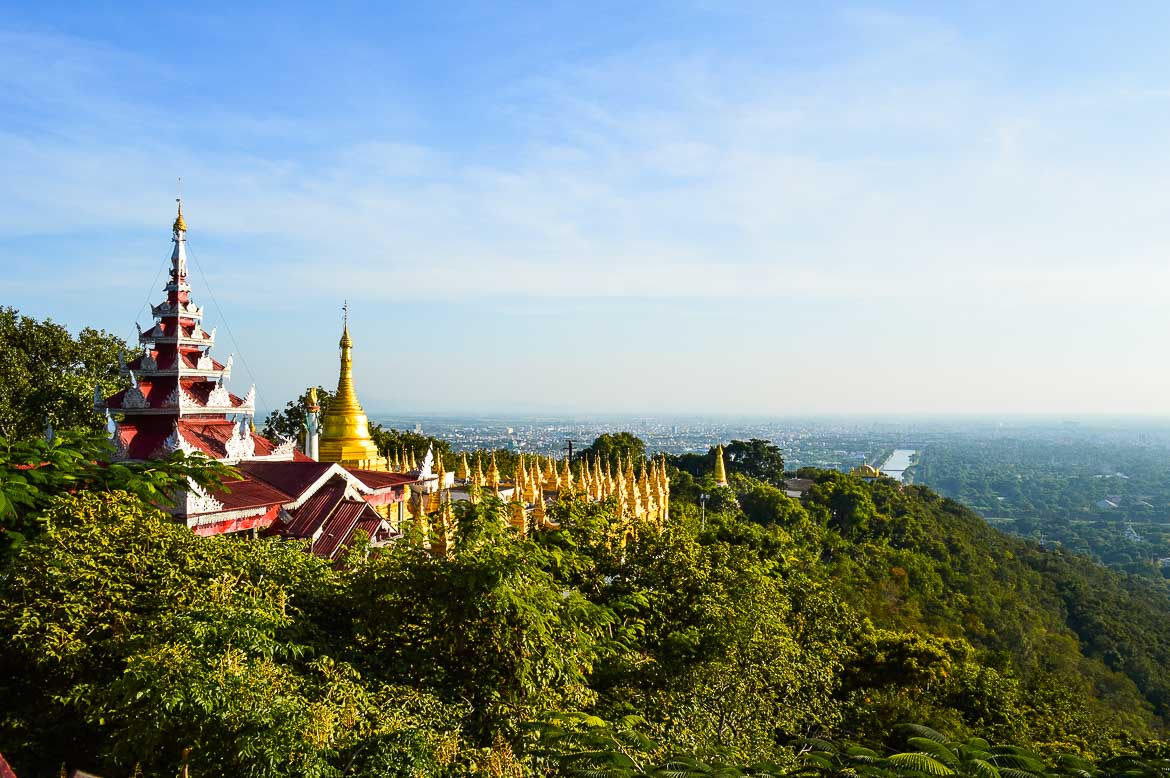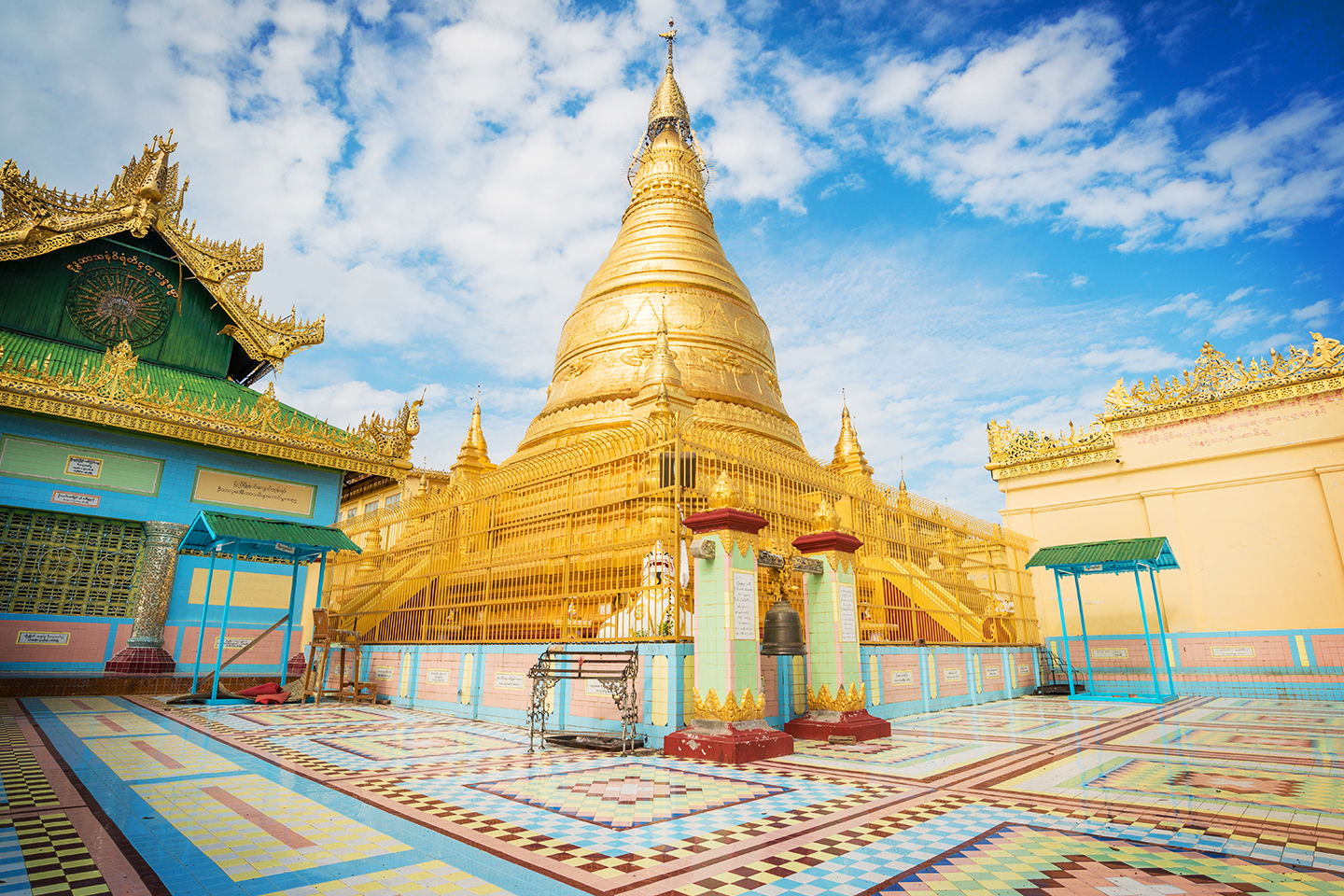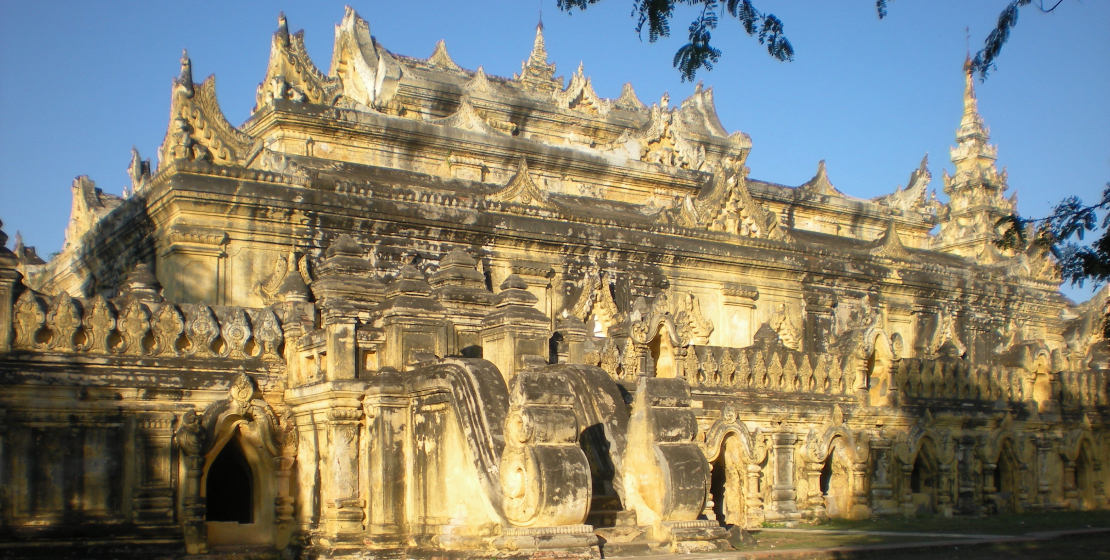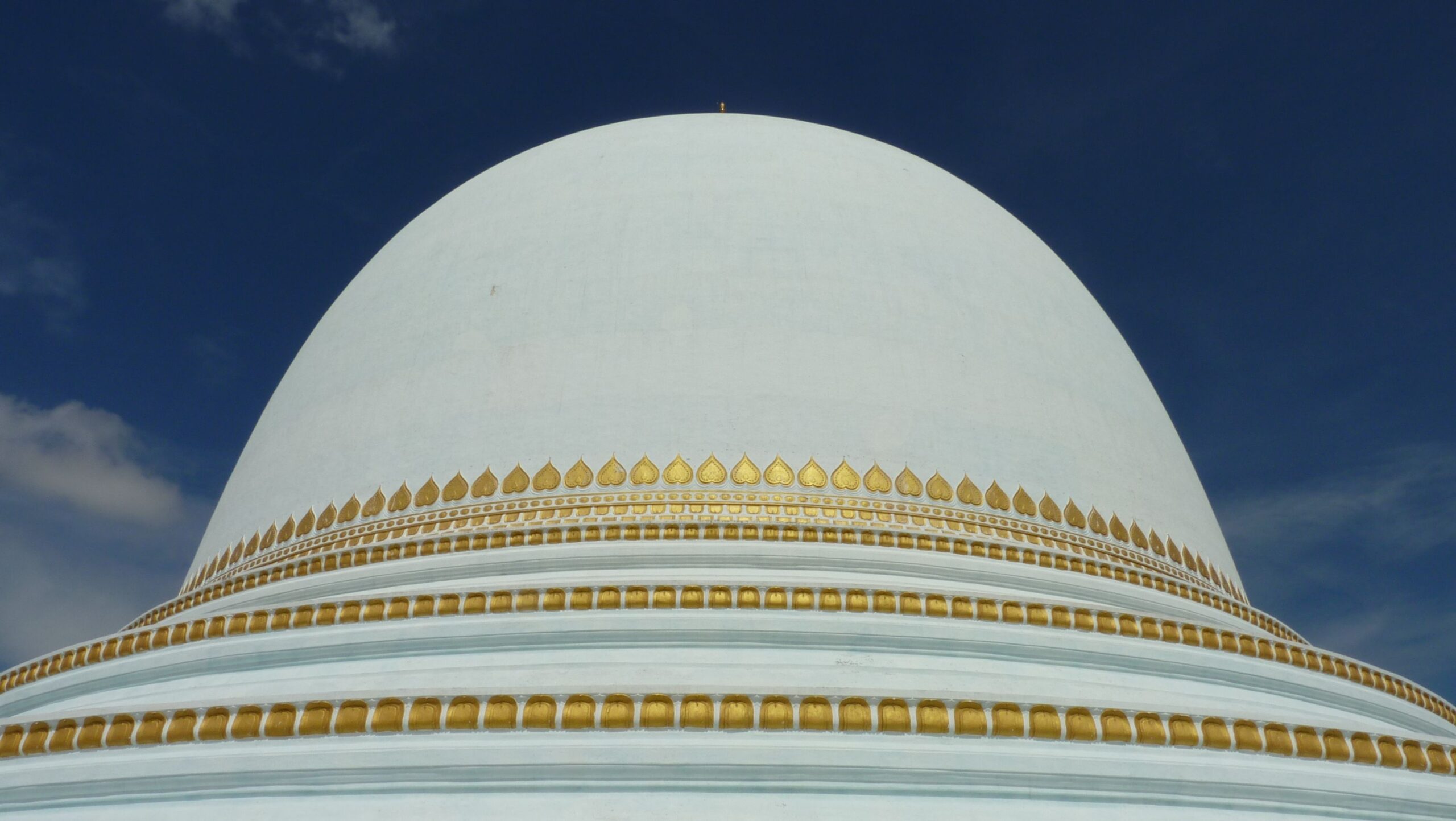

HIGHLIGHTS
– Discover the great unfinished pagoda of King Bodawpaya, which was split during an earthquake in 1838.
– Take a brief stop to visit the Mingun bell, reigned as the largest ringing bell in the world.
– Visit the elegant 7-tiered Hsinbyuma Pagoda, a beautiful all white structure on the banks of the Irrawaddy river.
– Visit the Soon U Ponyo pagoda which offers a beautiful panorama of the surrounding hills.
– Opportunity to make offerings the nuns at a local monastery
– Visit Sagaing with its 600 ivory pagodas and monasteries
Enjoy a cultural and spiritual day tour in Mandalay
After being transferred to the Mandalay pier, you’ll embark on a 45 minutes boat trip on the Irrawaddy River to Mingun.
Mingun is a peaceful town on the west bank from Mandalay where time seems to stand still and only coming to life thanks to the merchants traveling the place.
The first stop is the ruined temple of Mingun Pahtodawgyi, the town’s main attraction. It’s an exceptional architectural jewel that has many unlucky stories to tell. The Mingun temple was commanded by the King Bodawpaya in 1790 and never completed, due to an astrologer claiming that, once the temple was finished, the king would die. In 1838, the temple suffered an earthquake that slipt it up.
Then, you’ll make a brief stop to see the Mingun Bell, claimed as the largest ringing bell in the world.
Before boarding back to Sagaing, visit the elegant 7-tiered Hsinbyuma Pagoda. It’s a charming all-white structure with a high dome and seven concentric terraces pooling at the banks of the Irrawaddy River.
After having lunch on board, you will be able to visit several pagodas, including the Soon U Ponyo pagoda which offers a beautiful panorama of the surrounding hills.
Then, you will be taken to a monastery to get a glimpse of the daily life of the nuns. It’s the opportunity to present an offering to each of the nuns that will take a moment to welcome you into their daily life and share their visions of life.
Finally, discover Sagaing on the other side of the Irrawaddy River. With 600 ivory pagodas and monasteries, Sagaing Hill is considered the spiritual center of Myanmar and is home to nearly 6,000 monks.
Useful Information
Full day
English Speaking Guide
Private Pick up at your Hotel
Boat trip on the Irrawaddy river to Mingun




